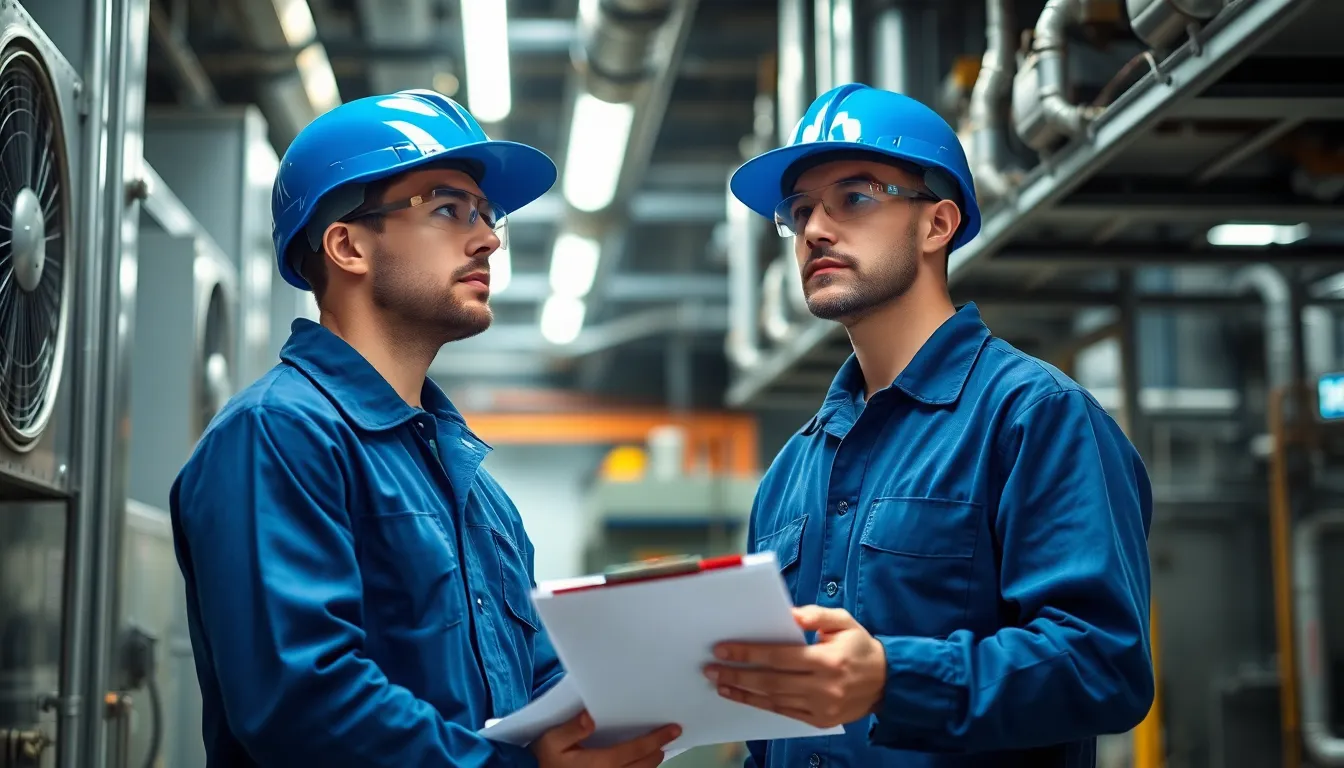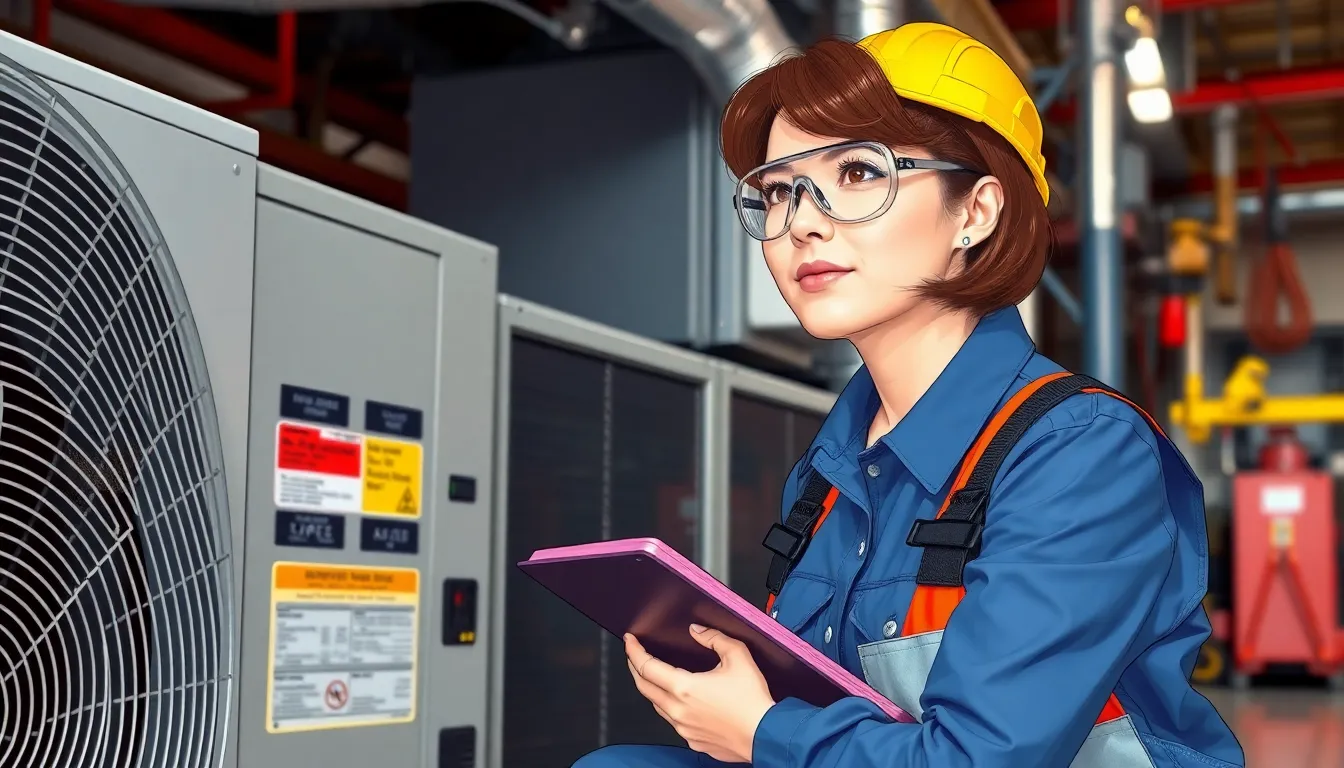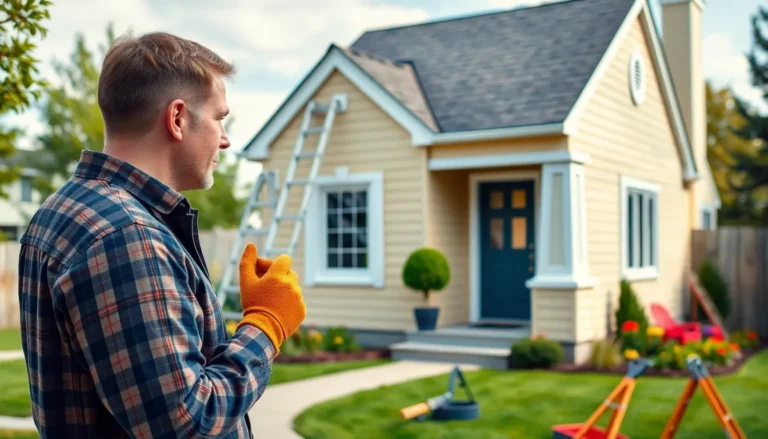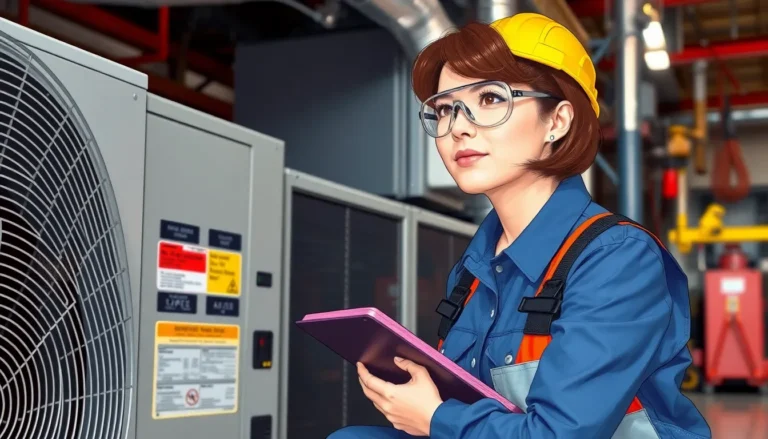Table of Contents
ToggleIn the bustling world of facility management, preventive maintenance is the unsung hero, quietly saving the day while most people are busy chasing after the latest trends. Imagine a superhero in coveralls, swooping in to fix squeaky doors and flickering lights before they turn into full-blown crises. It’s not just about keeping things running smoothly; it’s about saving time, money, and a whole lot of headaches.
Understanding Facility Preventive Maintenance
Facility preventive maintenance plays a pivotal role in maintaining operational efficiency and ensuring longevity for equipment and systems. It prevents minor issues from growing into costly repairs or operational disruptions.
Definition of Preventive Maintenance
Preventive maintenance refers to the proactive routine of servicing and inspecting equipment to avoid unexpected failures. This practice includes tasks like regular inspections, lubrication, and adjustments based on manufacturer recommendations. Engaging in preventive maintenance helps organizations maintain a favorable operational state while extending the lifespan of their assets.
Importance of Preventive Maintenance in Facilities
Importance of preventive maintenance in facilities cannot be overstated. It significantly reduces unexpected equipment downtime, which directly impacts productivity. Scheduled maintenance tasks also enhance safety for staff and visitors. Regular upkeep leads to cost savings, decreasing the likelihood of major repairs or replacements. Organizations that prioritize preventive maintenance often enjoy improved compliance with safety regulations and enhanced overall facility performance.
Components of a Preventive Maintenance Program

Preventive maintenance involves key components that ensure optimal facility operations. These elements lay the foundation for an effective program.
Maintenance Schedule
Establishing a maintenance schedule is crucial for consistent upkeep. A well-defined schedule outlines the frequency and types of maintenance tasks required. Tasks may include monthly inspections of HVAC systems or quarterly checks on electrical equipment. Regular assessments help identify potential issues before they develop. Utilizing software for scheduling can streamline this process, allowing teams to track completion and prioritize urgent needs.
Task Prioritization
Prioritizing tasks improves efficiency and resource allocation. Technicians can assess the urgency and impact of each maintenance task. High-priority items, such as repairing safety equipment, demand immediate attention, while lower-priority tasks might include servicing minor fixtures. An organized list helps teams focus on critical tasks first. This systematic approach ensures that essential maintenance aligns with operational needs, enhancing overall facility performance.
Benefits of Facility Preventive Maintenance
Facility preventive maintenance offers several advantages that directly impact operational efficiency and cost-effectiveness.
Cost Savings
Reducing unexpected breakdowns leads to significant cost savings. Facilities that employ preventive maintenance typically experience 12% fewer emergency repairs compared to those that do not implement such practices. Scheduled upkeep minimizes the need for major repairs, as early detection of issues permits timely interventions. Preventive maintenance also optimizes resource allocation by prioritizing essential tasks, ensuring funds are spent effectively. Equipment replacements can become costly, but regular maintenance extends asset life, delaying replacement investments. Additionally, many insurance providers offer lower premiums for facilities that demonstrate robust preventive maintenance strategies.
Increased Equipment Lifespan
Extending equipment lifespan plays a crucial role in optimizing facility operations. Regular maintenance improves performance and reduces wear and tear on machines, resulting in a longer operational life. A well-executed preventive maintenance program can extend equipment lifespan by up to 30%. Technicians can identify minor issues during inspections, preventing them from escalating into major failures. Investing in preventive measures enhances not only equipment longevity but also improves overall facility productivity. Regular updates to maintenance schedules ensure equipment receives specific care based on manufacturer guidelines, thereby maximizing efficiency and reliability.
Challenges in Implementing Preventive Maintenance
Implementing preventive maintenance presents unique challenges. These hurdles can affect overall facility management effectiveness.
Resource Allocation
Resource allocation often poses difficulties in a preventive maintenance program. Budget constraints can limit the availability of funds for maintenance tasks. Allocating sufficient human resources is equally essential, as understaffing can lead to missed maintenance schedules. Staff focused on urgent repairs might overlook preventive tasks. Proper prioritization of maintenance activities becomes critical due to balancing immediate needs against long-term operational goals. Effective preventive maintenance can lead to significant benefits, such as a 12% reduction in emergency repairs, which emphasizes the importance of strategic resource management. Companies need to consider these factors to ensure consistent maintenance practices.
Staff Training
Staff training remains a vital aspect of preventive maintenance implementation. Well-trained personnel can effectively identify and address potential issues before they escalate. Training programs should cover not only technical skills but also the importance of routine checks and preventive tasks. Engaging employees with knowledge about equipment intricacies fosters a proactive mindset. As a result, well-informed staff can enhance equipment performance and reliability. Investing in regular training assures that employees remain competent, directly supporting the goal of reducing unexpected equipment downtime by maximizing operational efficiency.
Best Practices for Successful Facility Preventive Maintenance
Implementing the best practices for preventive maintenance enhances facility efficiency and reduces costs. Focused efforts lead to better overall performance and longevity of assets.
Regular Inspections
Consistent inspections form the backbone of an effective preventive maintenance program. Monthly evaluations of HVAC systems and quarterly assessments of electrical equipment help identify potential issues early. Employing a checklist during these inspections ensures no component goes unchecked. Assigning responsibilities to skilled staff enhances accountability and efficiency. Technicians should document each inspection thoroughly, allowing for easy tracking of recurring problems. This proactive approach minimizes the chances of emergency repairs, contributing to reduced operational costs and improved equipment lifespan.
Utilizing Technology
Adopting technology streamlines preventive maintenance processes significantly. Computerized Maintenance Management Systems (CMMS) enable facilities to schedule and manage maintenance tasks efficiently. Automated alerts remind staff of upcoming inspections and necessary repairs, decreasing the likelihood of missed schedules. Data analytics within these systems provide insights into equipment performance, informing decision-making for maintenance needs. Regular updates on equipment status enhance visibility and support timely interventions. Overall, leveraging technology not only optimizes resources but also fosters a proactive maintenance culture across the organization.
Preventive maintenance stands as a cornerstone of effective facility management. By prioritizing routine inspections and proactive servicing, organizations can significantly enhance their operational efficiency. This approach not only extends the lifespan of equipment but also fosters a safer environment for all.
Investing in a well-structured maintenance program pays off in reduced emergency repairs and overall cost savings. As facilities navigate the challenges of resource allocation and staff training, adopting best practices and leveraging technology can streamline processes. Ultimately, embracing preventive maintenance is a strategic choice that leads to improved productivity and a more resilient operational framework.







